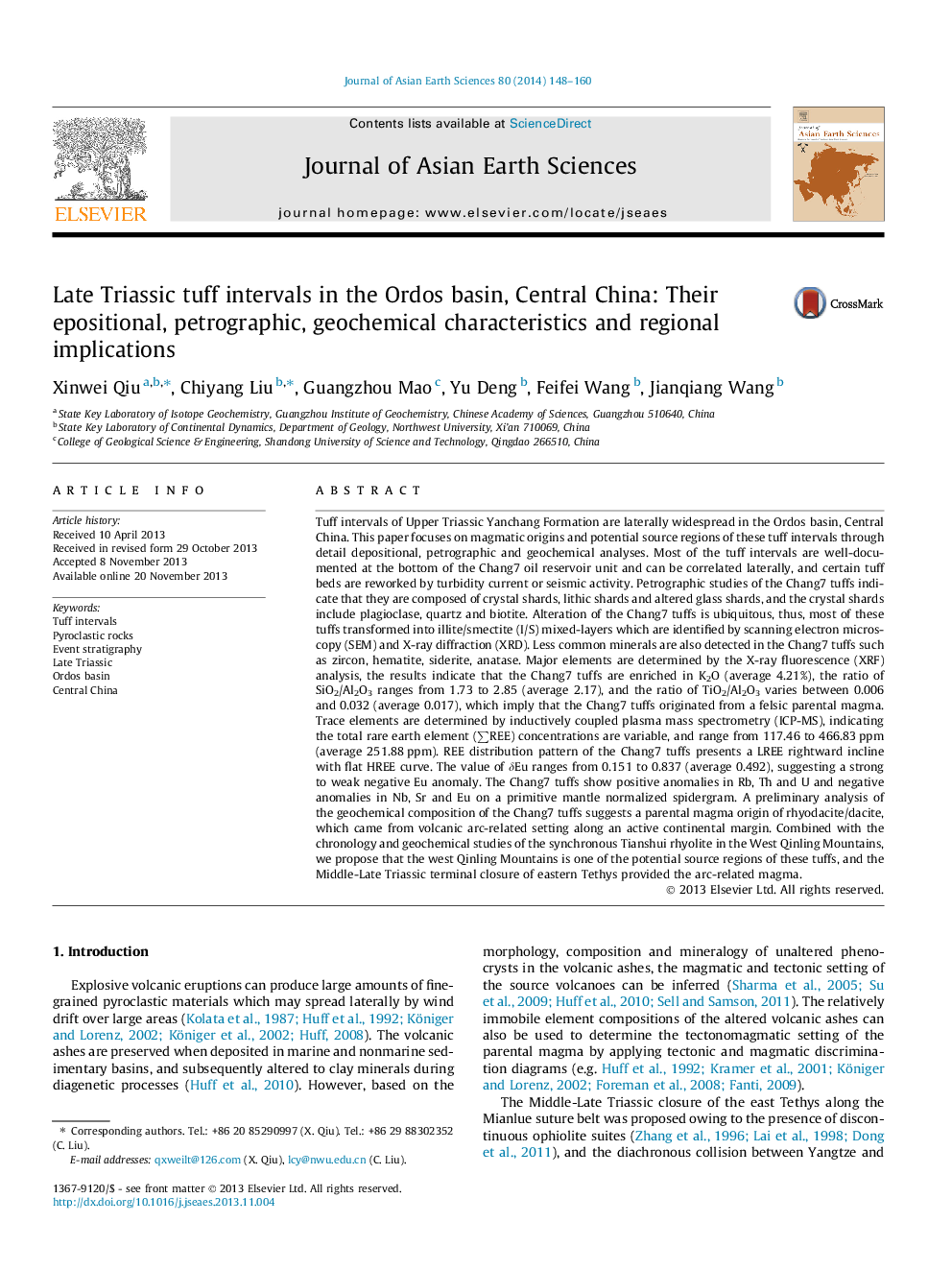| کد مقاله | کد نشریه | سال انتشار | مقاله انگلیسی | نسخه تمام متن |
|---|---|---|---|---|
| 4730771 | 1640388 | 2014 | 13 صفحه PDF | دانلود رایگان |
• Late Triassic depositional events were activated by adjoining volcanism.
• The Chang7 tuffs are derived from a calc-alkaline arc-related parental magma.
• The Tianshui rhyolite is probably one of the volcanic sources of the Chang7 tuffs.
Tuff intervals of Upper Triassic Yanchang Formation are laterally widespread in the Ordos basin, Central China. This paper focuses on magmatic origins and potential source regions of these tuff intervals through detail depositional, petrographic and geochemical analyses. Most of the tuff intervals are well-documented at the bottom of the Chang7 oil reservoir unit and can be correlated laterally, and certain tuff beds are reworked by turbidity current or seismic activity. Petrographic studies of the Chang7 tuffs indicate that they are composed of crystal shards, lithic shards and altered glass shards, and the crystal shards include plagioclase, quartz and biotite. Alteration of the Chang7 tuffs is ubiquitous, thus, most of these tuffs transformed into illite/smectite (I/S) mixed-layers which are identified by scanning electron microscopy (SEM) and X-ray diffraction (XRD). Less common minerals are also detected in the Chang7 tuffs such as zircon, hematite, siderite, anatase. Major elements are determined by the X-ray fluorescence (XRF) analysis, the results indicate that the Chang7 tuffs are enriched in K2O (average 4.21%), the ratio of SiO2/Al2O3 ranges from 1.73 to 2.85 (average 2.17), and the ratio of TiO2/Al2O3 varies between 0.006 and 0.032 (average 0.017), which imply that the Chang7 tuffs originated from a felsic parental magma. Trace elements are determined by inductively coupled plasma mass spectrometry (ICP-MS), indicating the total rare earth element (∑REE) concentrations are variable, and range from 117.46 to 466.83 ppm (average 251.88 ppm). REE distribution pattern of the Chang7 tuffs presents a LREE rightward incline with flat HREE curve. The value of δEu ranges from 0.151 to 0.837 (average 0.492), suggesting a strong to weak negative Eu anomaly. The Chang7 tuffs show positive anomalies in Rb, Th and U and negative anomalies in Nb, Sr and Eu on a primitive mantle normalized spidergram. A preliminary analysis of the geochemical composition of the Chang7 tuffs suggests a parental magma origin of rhyodacite/dacite, which came from volcanic arc-related setting along an active continental margin. Combined with the chronology and geochemical studies of the synchronous Tianshui rhyolite in the West Qinling Mountains, we propose that the west Qinling Mountains is one of the potential source regions of these tuffs, and the Middle-Late Triassic terminal closure of eastern Tethys provided the arc-related magma.
Journal: Journal of Asian Earth Sciences - Volume 80, 5 February 2014, Pages 148–160
